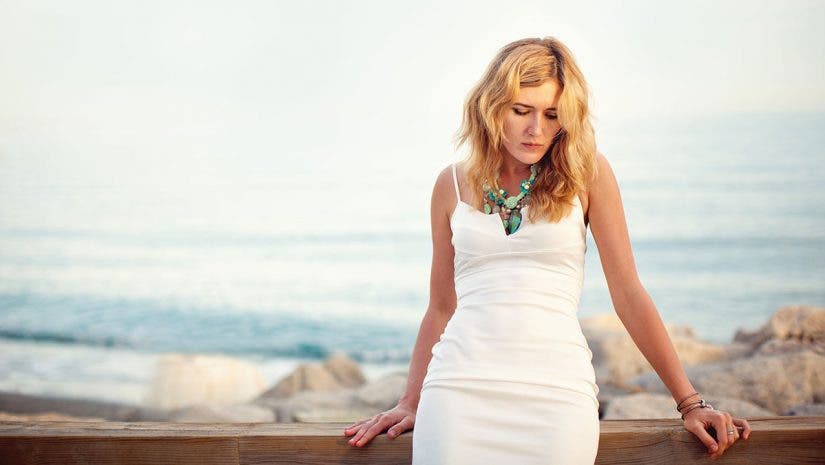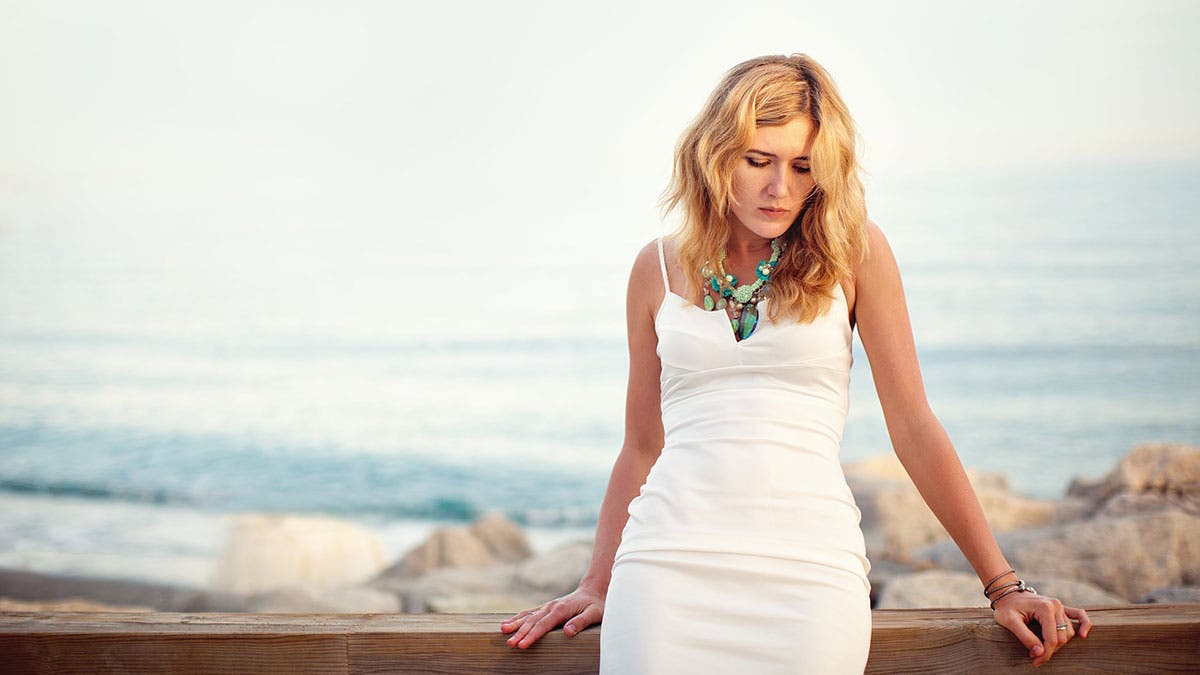When it comes to creating spectacular outdoor portraits, early morning sunlight alone is often not enough to generate the “magic” you envision. That’s when you need a little help.

Before you go to shoot that early morning outdoor portrait, make sure to have the following checklist with you.
- Coffee
- Camera
- Telephoto lens
- Supplemental portable lighting gear to make that morning light really shine
This lesson features some new portable Photoflex equipment, all available from the Photoflex store at Adorama, including the StarFire™ ShoeMount flash, the FlashFire™ wireless triggers, the DualFlash Hardware and the LiteReach™, and demonstrates some straightforward techniques in achieving beautiful outdoor portraits.
- The Concept
- Considering the Sun’s Position
- Trying a Flash Fill
- Changing Lenses
- Bouncing Sunlight
- Coming In Tight
Related Products Available At Adorama
- Photoflex Accessory HeavyDuty Swivel
- Photoflex DualFlash Adapter Kit
- Photoflex OctoDome 3 Small 3′
- Photoflex Dual Shoe Flash Connector
- Photoflex LitePanel Kit
- Photoflex LiteReach Kit
- Photoflex RockSteady Bag
- Photoflex TransPac GigBag
- StarFire and FlashFire Wireless Flash System

Figure 1
The Concept
For this lesson, I wanted to shoot an early morning portrait of my model, Mattie, at a local beach. I wanted to shoot at dawn to take advantage of the warm quality of light, and to be able to enhance it somewhat with some additional lighting equipment.
My assistant James and I arrived at the beach around 6:00 am to get set up for the shoot. Mattie would arrive a half an hour later once we were set up and had our game plan down. [figure 1]

Figure 2
The lighting gear we used all fit into two cases: a Photoflex GigBag® and a LitePanel™ Carry Bag. Here are a couple of snaps of James carrying these cases, along with his camera bag. [figures 2 & 3]

Figure 3
Considering the Sun’s Position
Although the beach was west-facing, I wanted to shoot with the dunes in the background, which meant that the sun, rising in the east, would be back-lighting Mattie which, for me, was ideal. When shooting portraits outdoors, I prefer to have the sun back-lighting my subjects so as to prevent hard shadows from being cast across the face. Depending upon the subject’s features, these shadows can be distracting, and in many cases, unflattering.
Once Mattie arrived, I had her stand with her back to the sun and took some shots with a standard lens with exposure settings that would not overexpose her hair or the background. [figures 4 & 5]

Figure 4

Figure 5
Here is one of the better results from this series. [figure 6]

Figure 6
As you can see from the result, the exposure on Mattie’s face is a little too dark. But remember, had I shot at a brighter exposure level, Mattie’s hair would have been overexposed. As a rule, professional photographers – particularly portrait photographers – tend to avoid overexposing any area of the frame because overexposure equals no detail, and no detail ultimately becomes a distracting element.
Trying a Flash Fill
For comparative purposes, I decided to shoot another series at a slightly higher exposure level and with the built-in flash activated. This is a method many novice photographers will use for outdoor portraits, as it helps to reduce the contrast. [figures 7 & 8]

Figure 8
In the result, you can see that the contrast ratio is somewhat better than in the previous shot, but at the expense of a somewhat unnatural quality of light, which is most evident in the eyes. See the tiny reflections centered in the middle of the pupils? These reflections would not appear like this in person unless you happened to be holding a tiny flashlight directly into her eyes while you looked at her. So unless you’re a doctor or optometrist and conduct your examinations at the beach, this is a fairly unlikely lighting scenario.

Figure 9
Changing Lenses
Some may be thinking, “Right, but what if you just backed up and shot full-length? You wouldn’t be able to see these small catch-lights from that distance.” A good point, but there’d be another thing that wouldn’t be showing up from that distance as well: the light from the flash.
To illustrate, I next swapped out the standard lens with a telephoto lens, moved back about 50 feet, and took a series of shots with the flash still activated. As you can see from the result below, the flash was too far away to have any effect on the exposure. [figures 9 & 10]

Figure 10
Bouncing Sunlight
With respect to the lighting, we were now back to square one. Mattie’s hair was right on the edge of being overexposed, while the majority of the light on Mattie was significantly underexposed. I liked the exposure on the background, which meant that all I needed to do was bounce some sunlight into the shadow areas.
James then brought over the 39×72 inch LitePanel Kit he had set up previously and angled it so that the Soft Gold fabric on the LitePanel would bounce warm sunlight onto Mattie from head to toe. Remember, if you want to create an even reflection for your full-length shots, you need to use a light source or reflector at least as tall as your subject. At 6 feet tall in the vertical position, the LitePanel is the perfect choice. (For basketball players, you might might to opt for the 77×77 LitePanel Kit!)
Although we were lucky to have very little wind this morning, we made sure the LitePanel Kit was stable by weighting down the LiteStand with a RockSteady® weight bag (filled with sand from the beach). The other thing that made this setup sturdier was the GripJaw™ and Grip Swivel hardware, which attaches the LiteStand to the LitePanel frame, and which are both now included with all LitePanel Kits. [figures 11 & 12]

Figure 11

Figure 12
With the LitePanel in position, I took a series of shots at the same exposure settings, but without the built-in flash activated. [figure 13]

Figure 13
Here’s one of my favorites from this series. [figure 15]

Figure 15
Here, you can see that the LitePanel made a tremendous impact on the lighting of the shot. The warm light of the morning sun mixed with the warm tone of the Soft Gold fabric really made Mattie’s skin tone glow. The light levels of the subject and background were now much more balanced and the shot had a somewhat cinematic feel to it. So much so, in fact, that later that day in the studio, I decided to create a vintage looking sepia-toned version just for kicks. [figure 16]

Figure 16
In the side-by-side comparison below, you can see how much of a difference the LitePanel made here. [figure 17]

Figure 17
Coming In Tight
Finally, I wanted to come in tighter again and focus on the head-and-shoulders crop. In addition to using the LitePanel, I also wanted to throw a little soft light over Mattie’s hair on the camera-right side to further separate it from the background. I decided to use a Small (3-foot) OctoDome® powered by two Photoflex StarFire shoe mount flashes and mounted to a LiteReach. Below, James documented the setup process.
First, I set up the LiteReach, mounted a HeavyDuty Swivel to it and then temporarily mounted the DualFlash Adapter Kit to the Swivel. [figure 18]
I then set up the Small OctoDome by way of a Reflector Connector. [figure 19]

Figure 18

Figure 19
Next, I mounted the DualFlash Hardware to the Reflector Connector and then attached it to the Heavy Duty Swivel. [figure 20]
I then configured the internal reflective panels of the OctoDome to both silver and gold to match the warm light of the sun and LitePanel. [figure 21]

Figure 20

Figure 21
Finally, I attached the FlashFire wireless receivers to both of the FlashFire flashes, mounted them to each of the cold shoes of the DualFlash Hardware and powered them up. With the wireless transmitter mounted to the hot shoe of my camera, I would be able to trip the flashes for the next series of shots. [figures 22 & 23]

Figure 22

Figure 23
With everything synced up, I had James detach the legs of the LiteReach and extend the riser so that he could hold it above Mattie. I also had James set each flash to approximately half power so that they could recycle quickly, which would allow me to shoot at a faster pace. [figures 24 & 25]

Figure 24

Figure 25
Once everything and everyone were in position, I took a final series of shots. Below are two results from this series. [figures 26 & 27]

Figure 26

Figure 27
The look of the shots ended up being just what I was going for. The LitePanel and Small OctoDome worked perfectly to accentuate the warm light of the sun, the telephoto lens helped to keep the optical distortion low and throw the background out of focus, and Mattie (a relative newcomer to modeling) did a great job looking great, relaxed and natural.
In the side-by-side comparison below, you can see how effective supplemental lighting can be when shooting outdoor portraits.

Figure 28
As always, remember to experiment with your camera and lighting techniques—and buy your lighting and other photographic gear at Adorama—and have fun in the process!
Written and photographed by Ben Clay, contributing lesson writer for WebPhotoSchool.com® and Photoflex.com®.
Modeled by Mattie McQuinn.
Assisted by James Helms.
Copyright © Photoflex, Inc. and Adorama Camera, Inc.







